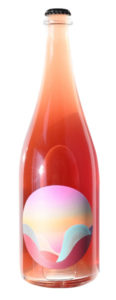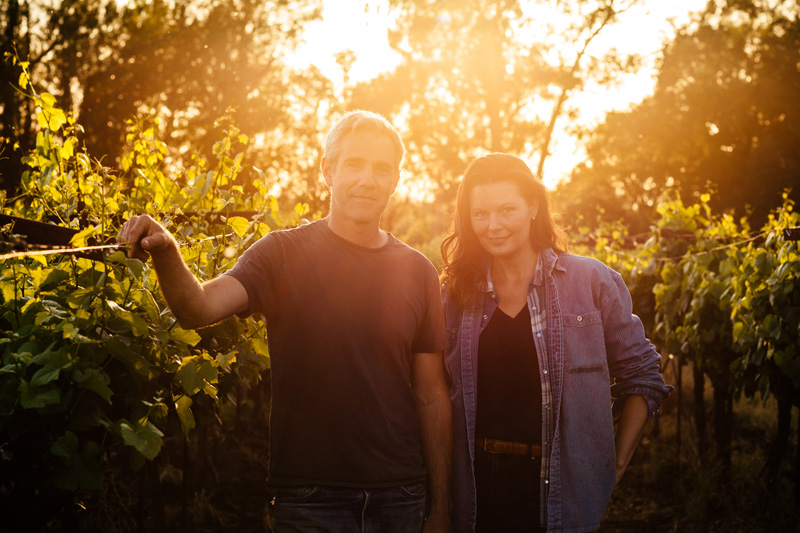By late August, our rituals of summer drinking — high SPFs and low ABVs—have begun to unravel. Our susceptibility to festive millennial branding, at least in the context of canned rosé and hard cider, does (thank God) appear to have a limit.
So when fall rolls around, most of us are more than ready to switch gears. But to what, exactly? And what about that case of Whispering Angel left over from the family reunion in July? My advice: Save it for the spring — you don’t want to waste the year’s best wine-drinking season slowly depleting your stash of forgettable rosé.
To help ease your transition to more intentional modes of drinking, here are three wine categories that touch on some of the themes I’m personally exploring this fall.
Co-ferments
In the summer of 2020, when wildfires were ravaging Northern California and many producers were calling it quits, Jason Charles of Vinca Minor was dreaming about apples. His fascination had been sparked during one of his regular commutes — now through billowing smoke — up the 101 to Mendocino’s Redwood Valley, the region that supplied the majority of his grapes. At first it was simply the sheer volume of orchards along the highway — a feature of the landscape he’d previously overlooked. But what really interested him was the fruit’s unique set of attributes.
Apples are, well, kind of stupid. Compared to Vitis vinifera (the common grape vine), which transcribe every molecule of their environment into a complex array of flavors and textures, apples communicate very little about their surroundings. An apple’s ripeness level might tell you how sunny it was during the growing season — any other details are left to the imagination.
In normal times, this makes grapes the far more compelling of the two fruits. But normal times these were not — and driving past endless acres of vineyards devastated by smoke taint, Jason couldn’t help but wonder: Could apples be wine’s answer to climate change?
To find out, Jason started Moonland, a project devoted exclusively to co-fermentation. Apples, grapes, and pears — all organically farmed or foraged throughout Mendocino Country — are intermixed, either at the fermentation stage or during blending, in an attempt to explore the no man’s land between cider and wine.
The results are delicious. But more importantly, they address many of the questions that have been circulating through the natural wine community: Is it time to concede that the lines between cider, beer, and wine are all in our heads? How can we break from our dependence on monoculture to make room for more biodiverse agricultural paradigms?

Moonland Apple and Carignan Sparkling Rosé
Meet the bird-of-paradise of the wine kingdom. As for plumage, expect wild apple blossoms, tangy dragonfruit and mineral hues. Fizzy and dry. Nine percent alcohol. No added sulfur dioxide.
Earthy whites
After having watched red wine shift to lighter and brighter styles over these past few years, we’re now getting to see white wine embrace its dark side, abandoning zingy simplicity for more complicated, nonfruit tones. Sipping one can sometimes feel like burrowing into a pile of freshly raked leaves.
One unlikely hero of this story is Vermentino, a grape that makes most of us think of the sun-soaked Mediterranean. Yet here in the States, Vermentino is being recast as brooding protagonist in an effort among California producers to make serious white wine that is structured, age-worthy, and most importantly, isn’t Chardonnay.
For instance, Keep Wines, part of Napa’s vibrant indie scene, sources organic Vermentino from the Windmill Vineyard in rural Yolo County. Owners Jack Roberts and Johanna Jensen succeed in tempering the grape’s French Riviera vibes by harvesting early and bottling late (after aging the wine for 18 months in neutral oak). This supplies an earthy, oxidative character, offset by a vibrancy that will surely outlive us all.


Keep Windmill Vineyard Vermentino 2017
A swirling galaxy of toasted hazelnuts and wild fennel. The closest California has come to capturing the flinty, supernatural beauty of the Jura. 12.0 percent alcohol. Ninety cases produced.
Herbal reds
If you’re searching for brisk, savory reds this fall, one obvious place to look is up: Alpine wines have you covered. In fact, enjoying these wines is now easier than ever thanks to a handful of producers making exciting headway with alpine varieties like Trousseau, Poulsard, and Teroldego right here in the U.S. Brands to look for include Iruai, Cole Ranch, Ruth Lewandoski, and Idlewild.

But you don’t necessarily have to fuss over all those crampons and carabiners. Increasingly, winemakers are leveraging mainstream grapes like Pinot Noir and Syrah to hit these herbal high notes.
One such producer is Tim Sakhuja, who founded the tiny Berkeley-based winery Toshokan in 2020. Tim and his partner, Ayaka Nonaka, see winemaking as an act of curation (Toshokan means library in Japanese), with each wine serving as a record of a specific place and time. Because Tim and Ayaka came of age during the New California wine movement, which started gaining steam in 2013, their reference points are largely domestic (unlike previous generations, which looked to Europe). As a result, Toshokan wines feel refreshingly self-assured, evoking a free-wheeling spirit of creativity and craftsmanship that’s grounded in the here and now.

Toshokan Non-Vintage Pinot Noir N 1
Rips with tangy, graceful energy. Like getting your first tattoo, it will make you feel startlingly alive. Dried plums and juniper berries. 12.0 percent alcohol. Four barrels produced (roughly 75 cases).

